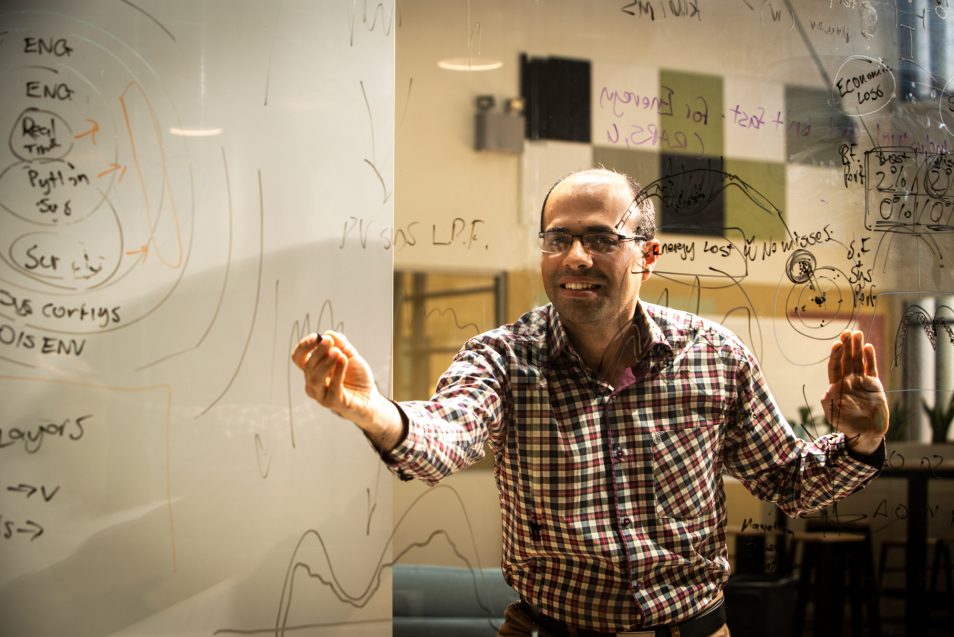
CSIRO’s NEAR Program is collecting, storing and analysing energy data to support Australia’s electricity system of the future.
Summer is a time when our energy system is put to the test. Long, warm days mean air conditioners running at full force, and the high temperatures can put our electricity generation technologies under stress. Like the power running to our homes and businesses, streams of data about how these hot days translate into Australia’s energy use are pouring out. There’s a vast amount of incredibly useful data, but it’s stored in different formats, by different organisations, and sometimes it never sees the light of day.
At the same time, we’re trying to figure out how the electricity system of the future will look. We’re seeing a rise in distributed energy technologies (like household solar panels, batteries and electric vehicles) and a growing complexity in the way we use energy (like air conditioners being switched on and off as temperatures wax and wane). So how can we stay on top of ongoing changes, and know where to invest in infrastructure? We’ve found a way to corral a lot of that data (and lots of smart research) into one central platform so the right information is available when it’s needed.
We’re calling it the National Energy Analytics Research (NEAR) Program – a collaboration between us, the Australian Government and the Australian Energy Market Operator (AEMO).

Dr Nariman Mahdavi Mazdeh is part of the research team centralising Australia’s energy data into the NEAR Program.
It’s all in the detail
When we say ‘data platform’, what we really mean is a huge online warehouse. It contains energy consumption patterns, characteristics of buildings where we live and work, information on how we use fridges and clothes dryers, statistics about weather patterns, and much more! It’s a range of different data sources that can deliver answers to really complex energy problems. So it’s a data warehouse and a data workhorse.
For example, using NEAR Program research, we could anticipate how a 35 degree day will drive air conditioner use across Victoria and where the energy will most need to flow as a result. Being able to marry that sort of information with statistics on which houses have solar panels or battery capabilities, for instance, means being able to direct funding for electricity infrastructure to the right place.

We’re shedding light on Australia’s energy use, with the NEAR Program.
Centralised data, and then what?
We’re currently undergoing a period of major energy transformation and the electricity network of the future will require billions of dollars of investment to get us to where we need to be. That’s why it’s so important that decisions about our energy future are underpinned by the very best data and research.
Over periods of extreme heat or system stress, outputs from the NEAR Program will help identify areas of risk and provide evidence to support appropriate decisions (like whether to apply ‘load shedding’ – more commonly known as ‘rolling blackouts’). This will mean a better bird’s eye view of what happens on those 35+ degree days, helping make sure the lights stay on and we all stay cool and calm.
The NEAR Program will also address increasing energy costs, linking consumer patterns with energy sector data to build a fuller picture of the modern Australian energy user. This will support research focused on simultaneously increasing comfort and lowering costs for Australian homes.
Already plugged in
Project leader Dr Adam Berry is a man who lives for data. He and the team are already off and running, contributing really important data to the Australian Competition and Consumer Commission (ACCC) Retail Electricity Prices Inquiry about how energy costs impact Australian households.
The team will keep working with government, regulators, operators and distributors, to drive data innovation needed by industry, researchers and policy makers to secure the best energy future possible for Australia.
We’re energised
Do you want to contribute to our understanding of household energy use? Our CSIRO Energise app has collated a veritable stack of information about how you use your appliances and react to weather fluctuations. This anonymised data comprises part of the NEAR Program too. It provides us with rich insight into the experiences of modern Australian energy consumers. And it’s not too late to participate, in fact, you can download the app right here.

You can be part of CSIRO’s energy research by providing valuable information via the CSIRO Energise app’s surveys. As an energy citizen scientist, you can help us paint a clearer picture of the way Australian households consume, generate and interact with energy.

